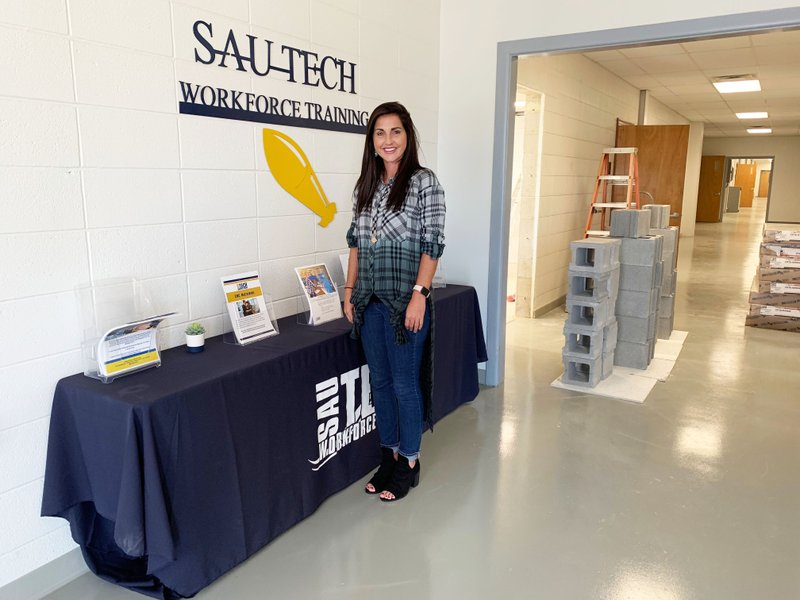CAMDEN — By SHEA WILSON
Feature writer
Southern Arkansas University Tech will soon have all of its workforce training in one central location.
The old manufacturing building is being renovated to accommodate workforce training. New classrooms and equipment to support the training needs of local industries are being put in place, according to Karmen House, SAU Tech Workforce Training Department program coordinator.
An open house to showcase the renovated facility is planned for mid-November.
“Our main focus is training the industries, but also training any local businesses,” House said.
“We serve Ouachita, Dallas, Calhoun and Columbia counties and any other businesses that come to us for training. We can’t go out of our service area, but they can come to us and ask for training.”
House said businesses typically contact her about the type of training needed and the number of students and she finds a qualified instructor to meet the need.
“I am able to apply for Office of Skills Development grants and so as long as they go through the college, I am able to apply for those grants and get them up to 75 percent back on their training costs,” she said.
Act 892 of 2015 created the Office of Skills Development, which is a part of the Arkansas Department of Workforce Education.
Grants offered help align career and technical education programs with skills needed by local businesses and industries.
House said this is beneficial because some of the classes can cost in the $15,000 range, so 75 percent is a considerable savings to the industries.
Additionally, travel costs for out-of-state training are saved by accommodating industries locally.
Classes also can be structured for two nights a week for several weeks in the evening so that employees can remain on the job and industries don’t lose work time
New equipment for digital radiography, computer numerical control and non-destructive testing training will soon be offered in the location.
Workforce training includes focuses in industrial, health and safety, office and environmental areas.
Industrial training includes: non-destructive training (industrial X-ray), computer numerical control machining, crane operations, crane rigging, process safety management, certified production technician, powered industrial truck (initial and re-certification), geometric dimensioning and tolerance, APICS-Detailed Scheduling & Planning, pallet jack, basic blueprint reading and basic welding.
Health and safety training includes: hazard communications, hazard assessment, Hazwoper (24-hour), Hazwoper (40-hour), Hazwoper refresher (eight-hour), OSHA 511 Standards for general industry, OSHA 10-hour general industry, OSHA 30-hour general industry, OSHA 10-hour general construction, OSHA 30-hour general construction, DOT hazardous materials transportation, and IATA dangerous goods.
Office training includes principles of ergonomics, basic Excel, advanced Excel and technical writing.
Environmental training includes asbestos worker, asbestos worker refresher, asbestos supervisor, asbestos supervisor refresher, industrial wastewater treatment, back-flow assembly tester, back-flow assembly repair, backflow assembly tester recertification, water treatment, water distribution, solid waste management and hazardous waste screening.
House said the department is continually assessing and adding programs to meet local needs.

